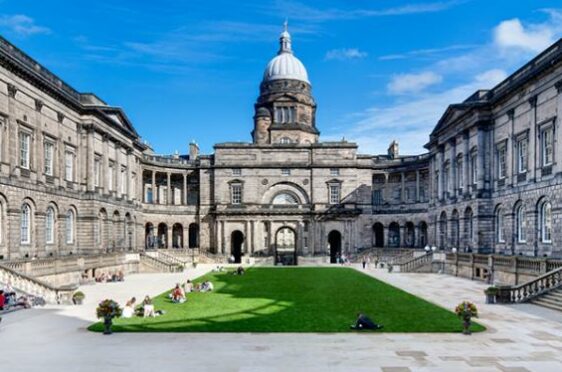
Scots pupils are being squeezed out of preferred courses because universities are increasingly seeking fee- paying overseas students, education experts warned yesterday.
Lindsay Paterson, professor of education policy at the University of Edinburgh, believes universities are favouring fee-paying international students over domestic students, especially in expensive and over-subscribed courses like medicine.
He said: “It’s certainly true that universities favour international students, who pay high fees, over home students. The universities have to do so in order to balance the books. That’s, in turn, because the Scottish Government doesn’t pay the full cost of teaching students from Scotland.
“So, essentially, overseas students are subsidising the Scottish Government policy of free higher education. This squeezes out some students from Scotland on courses where places are limited. There’s a further reason for the squeezing out.
“Because the Scottish Government is committed to paying fees for all undergraduate students from Scotland even if only inadequately, the Scottish Government puts a cap on the number of students from Scotland that each university can take – even on courses where there is no limit on the number of places. The squeeze on students from Scotland is partly a direct result of a deliberate Scottish Government policy.”
The latest figures from the Scottish Funding Council reveal a drop in Scottish students and a spike in the number of overseas students. In 2019-20, 102,285 Scottish-domiciled students entered higher education in Scotland, 3.9% fewer than in 2010-11 when there were 106,460 Scottish-domiciled entrants to Scottish institutions.
The number of non-European international students has increased by 53.6% since 2010-11, equivalent to 8,460 students. Education policy expert James McEnaney said there is evidence that school leavers with straight As in their Highers are rejected from Scotland’s universities in favour of fee-paying students.
A think tank recently revealed the number of Scots failing to win places has climbed and McEnaney, a lecturer and the author of Class Rules: the Truth about Scottish Schools, said: “So long as the Scottish Government is funding Scottish students there is a limit on the number of Scottish students that can go to university.
“If universities want to expand, they have to do it with non- domiciled or foreign students. It is undeniable in terms of the basic economics of it. I have heard of people applying to certain courses such as architecture and then being told there are only places if you are a non-domiciled student.
“If you are not going to have tuition fees but other parts of the UK are, then that is what complicates it. If you have this situation where the state with limited capacity is going to pay for Scottish students, then there comes a point where you have to limit how many you allow in.”
Earlier this month, think tank Reform Scotland called for Scottish graduates to pay back a proportion of their university fees when they earn enough money to be able to do so. The SNP abolished all charges when it took power in 2007 and ministers set the amount of funding provided to Scottish universities each year in order to cover free tuition for domiciled students in Scotland.
Professor Neil McLennan is an education expert and director of leadership programmes at University of Aberdeen.
He said it was flawed to assume that everyone should have a university education. He said: “What will society look like if everyone gets five Higher As and a degree? Does everyone need degrees?
“No matter how nice the sentiment, it is idealistic and utopian. The simple truth is that formal, structured education costs, and the money pot is not bottomless. A cap is needed.
“To help balance the books, foreign students enhance income. This is helped by the continued strong reputation of Scottish Higher Education.”
However, Universities Scotland, which represents all 19 of the country’s institutions, said: “Any university that doesn’t fill the set number of places for Scots will face financial penalties. Government controls around places on medical and dentistry degrees are even tighter.”

Enjoy the convenience of having The Sunday Post delivered as a digital ePaper straight to your smartphone, tablet or computer.
Subscribe for only £5.49 a month and enjoy all the benefits of the printed paper as a digital replica.
Subscribe